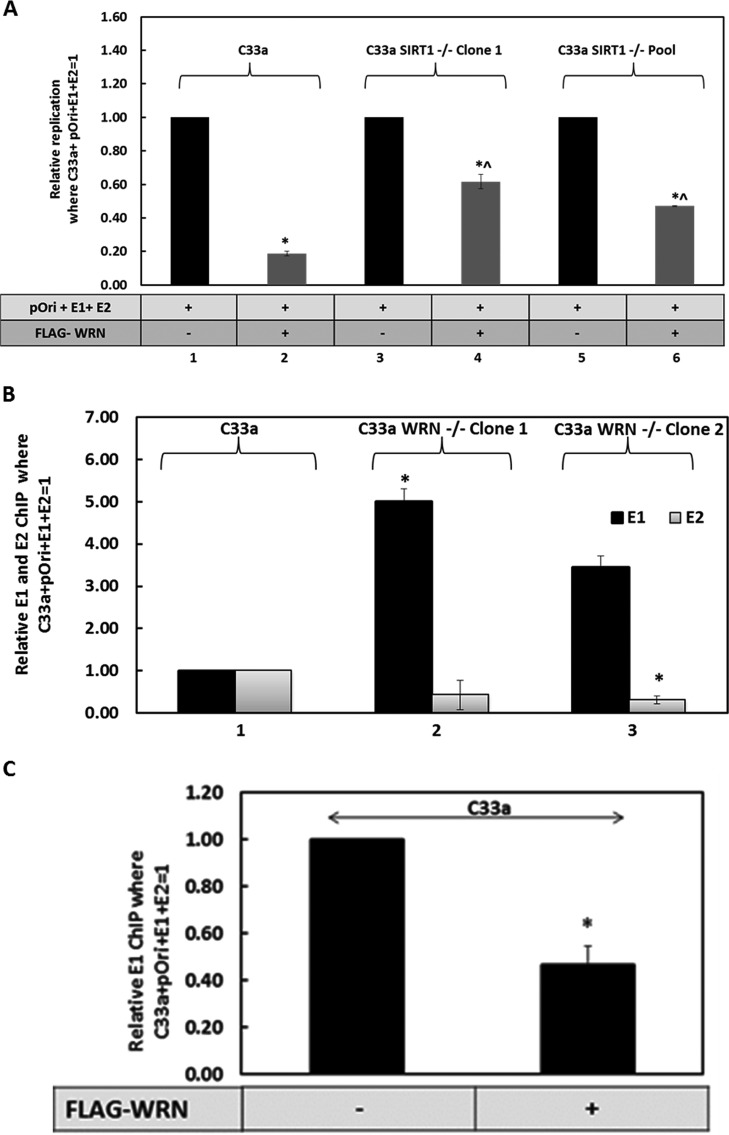FIG 7.
WRN regulates recruitment of E1 to E1-E2-replicating DNA. (A) WRN significantly represses E1-E2 DNA replication irrespective of SIRT1 status (*), but this repression is significantly less in the absence of WRN (^) (P values were less than 0.05 in all cases; standard error bars are shown). Results represent a summary of the results from at least 3 independent experiments, and standard error bars are shown. (B) In the absence of WRN, there are elevated levels of E1 on E1-E2-replicating DNA, as determined using ChIP. This reaches significance (*) in C33a WRN–/– clone 1 (P values were less than 0.05) but just fails to reach significance in clone 2 (lane 3), even though there is increased E1 detected. There is a reduction in E2 on E1-E2-replicating DNA in the absence of WRN, and this reaches significance in C33a WRN–/– clone 2 (*; P value was less than 0.05), with the same downward trend in C33a WRN–/– clone 1. Results are a summary of the results of at least 3 independent experiments, and standard error bars are shown. (C) When FLAG-WRN is coexpressed with the E1-E2-pOri replication complex, there is a significant decrease in E1 binding to the pOri plasmid. *, P value was less than 0.05 (a standard error bar is also shown). This is a summary of the results of three independent experiments.

